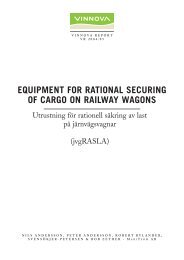Download - Autosim Autosim
Download - Autosim Autosim
Download - Autosim Autosim
Create successful ePaper yourself
Turn your PDF publications into a flip-book with our unique Google optimized e-Paper software.
CURRENT & FUTURE TECHNOLOGIES IN AUTOMOTIVE ENGINEERING SIMULATION<br />
Fig. 4.3.6.1: Key Aspects of Materials Characterisation<br />
(courtesy of Dr Paul Wood, University of Warwick)<br />
4.4 Improving Confidence in the Use of Simulation<br />
4.4.1 Introduction<br />
Confidence has a considerable influence on the uptake and use of CAE<br />
models. It is reliant on good material information and is necessary for the<br />
successful integration of CAE within the design and engineering process.<br />
Without confidence a model has no obvious benefit or value.<br />
Six principal factors that contribute to the development of a successful CAE<br />
model, which is capable of guiding engineering research and design<br />
decisions, are highlighted in Fig.4.4.1.1. These factors affect model<br />
confidence and cover a broad range of topics as follows:<br />
• The Physical model - Subjective and rational validation, integration<br />
of the modelling with test departments, standardisation of models to<br />
ensure the repeatability and reliability of test data/test corridors.<br />
• Human resources and organisation - Quality control and<br />
capitalisation, detection of modelling errors, staff training and<br />
existing staff skills.<br />
• Data validity - Reliability/confidence in experiments, availability of<br />
geometrical and material data.<br />
30 |<br />
SIXTH FRAMEWORK PROGRAMME PRIORITY [6.2] [SUSTAINABLE SURFACE TRANSPORT]<br />
012497 AUTOSIM
















